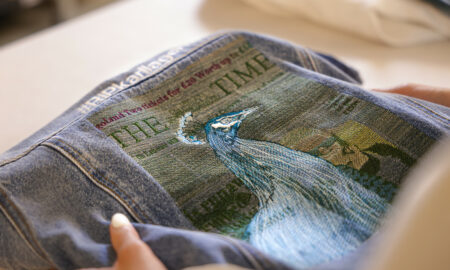Achieve Perfect DTG Printing on Dark and Coloured garments
If you visit trade shows, I am sure you have noticed the difference in the quality of the sample prints that the suppliers of DTG machines give you. I find it hard to believe that a supplier of a DTG printer would give you an inferior print sample when they are trying to sell you their product, but it does happen. Maybe the perceived value of quality is different from one supplier to the next? Who knows, but what I aim to do in this article is to provide you with advice on how to create the perfect DTG print on to dark garments?
Use the Best Possible Art File
The best type of file to work with is one that has a high resolution and is as close to the size of print you want to achieve and with a transparent background, so that this is filled with the colour of the shirt, and no changes need to made to the file. So to print on a medium-size t-shirt you are looking for a file with 300 dpi at size A4, in a PNG format. This means the file can be taken straight into most RIP Software provided with DTG printers, and you just press print.
Use the Best Possible Garment
The most suitable garment for DTG printing is made of 100% ring-spun cotton. The DTG water-based inks are specifically made for cotton-based fabrics, although some mixed fabrics work also. Ringspun, sometimes known as combed cotton has a tighter weave and is made from better quality cotton buds so there will be less fluffy ends on the surface of the fabric. This will obviously give a crisper, cleaner finish to your print, than if you are printed on a standard cotton t-shirt, such as Fruit of the Loom Value Weight or Gildan Ultra or Heavy cotton. These brands in the last couple of years have brought out t-shirts specifically aimed at the DTG market whereas some of the premium brands Teejays, Continential, Bella & Canvas, Next Level, generally sell ringspun cotton garments. Ask your DTG supplier for their suggestions on the best garments to use, and also gauge their expertise on their fabric knowledge. You can also print onto blended fabrics such as 50/50 polyester and cotton, model and viscose. With these mixes, it is better to wash test your final print to be sure it is durable. If you want to print onto 100% polyester most DTG printers can achieve this on white garments, sometimes using a special Polyester Pre-treatment, or Kornit is the only brand that has perfected digital print on 100% polyester using their 2019 launched printer the Polypro.
White Ink Control
Most DTG printers have their own RIP software that allows you to control the ink flow amounts, size and positioning. You should be able to adjust the amount of white ink laid down. More white ink does not always give you better quality and adds to the cost of the final print, so try reducing the white ink by around 10 or 20% and you probably won’t see the difference in quality. Just remember that an optimum level of white ink will give you a vibrant print when the colours are applied.
Pre-treatment
Consistent pre-treating is the secret to a perfect quality print. Operators often blame other factors, but a good pre-coat applied evenly will normally solve most quality issues. If you apply too little the design will look patchy and weak but if you apply too much, then there is a chance that the design will wash off or the ink will peel off. This is because the ink is laying on the pre-coat and not on the fabric. Achieving the best results requires a little practise so please try different garments and spray levels until you are satisfied. You could, of course, purchase an automatic pre-treater. The better ones have two or four spray nozzles that give you more constant coverage. Again, the preferred ones will allow you to set the amount of pre-treat laid down and give you the optimum coverage.
Curing the Garment
When you have printed the garment, you will have to cure the ink on a heat press. Make sure you have a good quality press and preferably one that hovers / swings over the print. Sometimes, your garment will come off the printer looking great, but after heat, pressing can look dull. This depends on the amount of ink you put down. One way to combat this is to place the garment on the press and hover the top plate over the garment for about a minute and then use a light-medium pressure to finish curing it. Keep these tips in mind and you should be able to print perfect prints every time.
All of the above applies to most of the DTG printers in the market. The exception comes with the last two points, pre-treatment and curing the garment which is different when you are working at an industrial level with the Kornit brand.
Kornit DTG machines have different technology – they operate a wet on wet printing process with built-in pre-treatment. The shirt is pre-treated first and then the ink is printed directly onto the wet pre-treatment. When the printing is finished the garment needs to be dried using a tunnel dryer rather than heat press as the garment is very wet.
If you follow this advice I am sure you will be happy with your final print. If you have any questions please feel free
to contact us.





















